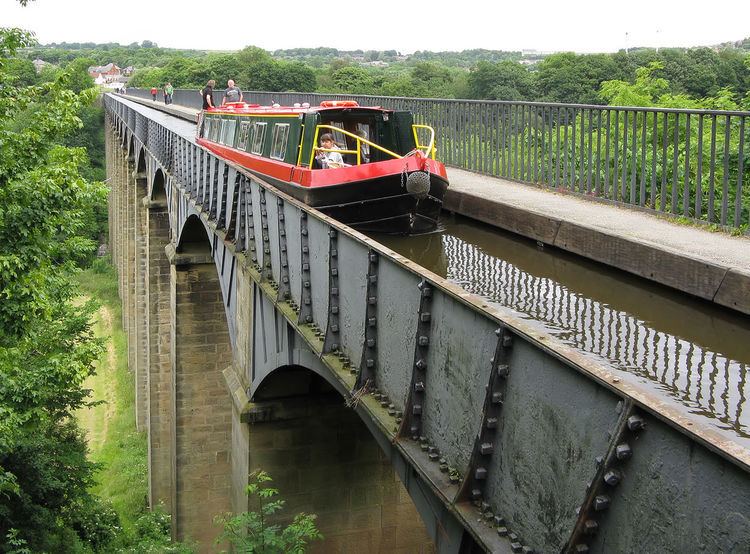 | ||
Similar Magdeburg Water Bridge, Pontcysyllte Aqueduct, Mittelland Canal, Briare aqueduct, Wasserstraßenkreuz Magdeburg | ||
Navigable aqueducts (sometimes called water bridges) are bridge structures that carry navigable waterway canals over other rivers, valleys, railways or roads. They are primarily distinguished by their size, carrying a larger cross-section of water than most water-supply aqueducts. Although Roman aqueducts were sometimes used for transport, aqueducts were not generally used until the 17th century when the problems of summit level canals had been solved and modern canal systems were developed. The 662-metre long steel Briare aqueduct carrying the Canal latéral à la Loire over the River Loire was built in 1896. It was ranked as the longest navigable aqueduct in the world for more than a century, until the Magdeburg Water Bridge in Germany took the title in the early 21st century.
Early aqueducts such as the three on the Canal du Midi had stone or brick arches, the longest span being 18.3 metres on the Cesse Aqueduct, built in 1690. But, the weight of the construction to support the trough with the clay or other lining to make it waterproof made these structures clumsy. In 1796 the first large cast iron aqueduct was built by Thomas Telford at Longdon-on-Tern on the Shrewsbury Canal. It has a total length of 57 metres across three intermediate piers. Within ten years Telford had completed the far more ambitious Pontcysyllte Aqueduct in Wales on the Llangollen Canal over the River Dee valley, with a total length 307 metres. Other cast-iron aqueducts followed, such as the single-span Stanley Ferry Aqueduct on the Calder and Hebble Navigation in 1839, with its innovative 50-metre through arch design.
